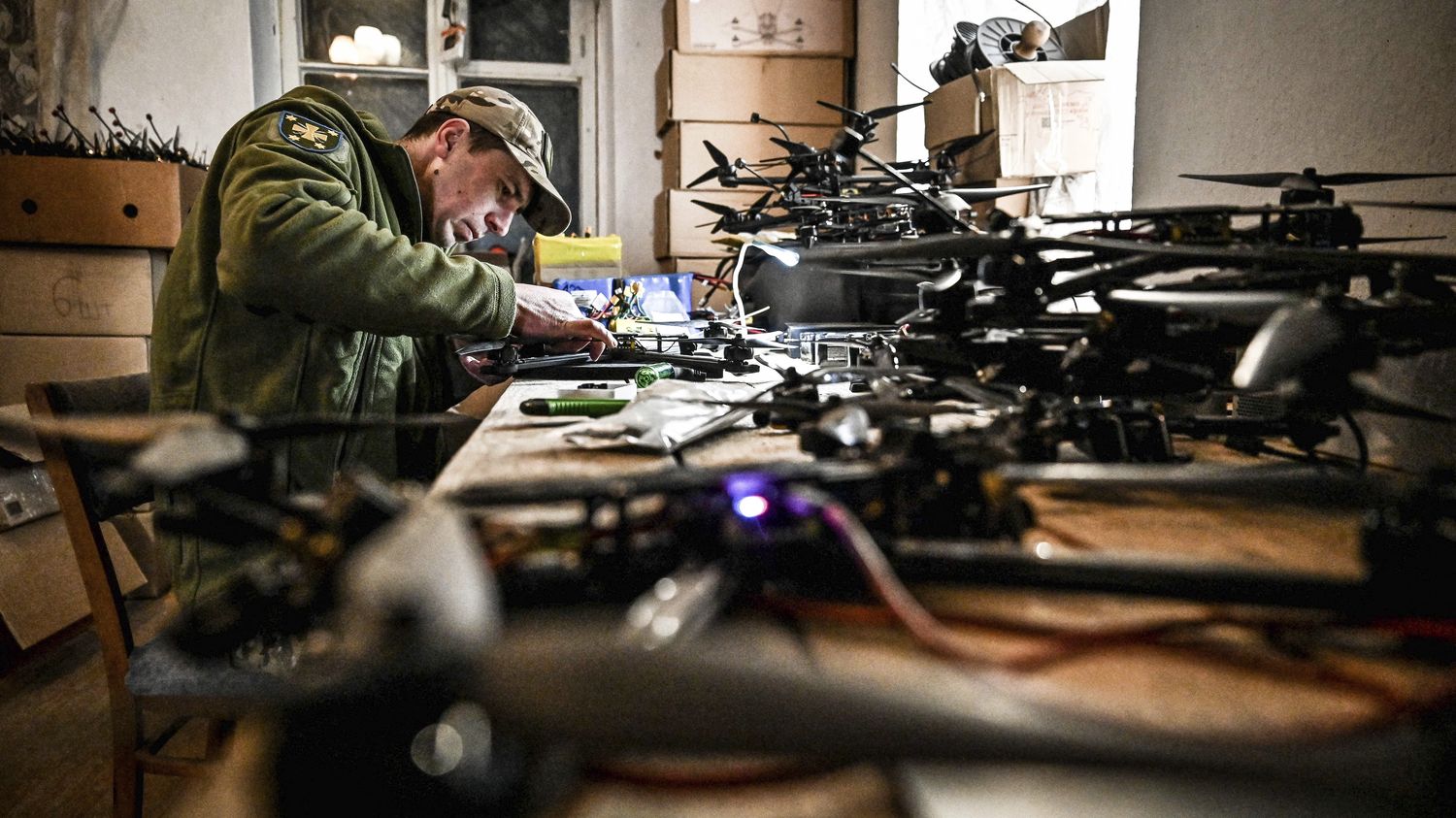The Twenty-Seven met on Thursday and Friday at a summit in Brussels to consider ways to better arm Ukraine in the face of the Russian threat.

Published
Reading time: 5 min

“We face the greatest threat to our security since World War II.” Ahead of the summit organized in Brussels (Belgium), Thursday March 21 and Friday March 22, the President of the European Council Charles Michel warned the member countries of the European Union (EU). To find a solution to the conflict in Ukraine, which has entered its third year, and stop the growing Russian threat, the Twenty-Seven are considering solutions to strengthen their military arsenal and firstly that of kyiv.
He is “high time we took radical and concrete measures to be ready in terms of defense”, warned the President of the Council. Franceinfo presents the different avenues considered.
Use profits from frozen Russian assets
During this summit, the Twenty-Seven must discuss a plan, presented on Wednesday, aimed at using the exceptional profits generated by the freezing of Russian assets in Europe, shortly after the invasion of Ukraine, on February 24, 2022. These assets, valued at more than 200 billion euros in the EU, generated income that the head of European diplomacy Josep Borrell estimated at more than three billion euros per year. The idea is to use most of it to finance arms purchases for kyiv.
The proposal presented on Wednesday provides that 90% of the seized revenues will be intended for the European Peace Facility, a tool created in 2021 which finances arms purchases. The remaining 10% will go to the EU budget to strengthen the capabilities of Ukraine’s defense industry. However, some European countries fear the legal and financial consequences of such a seizure.
Russia has warned Europeans of “damage that such decisions could cause to their economy, their image, their reputation as reliable guarantors of the inviolability of property”. “The people, the States, who will be involved in making such decisions will naturally become the subject of prosecution for many decades”warned a Kremlin spokesperson.
Abandon American arms manufacturers to favor European suppliers
The EU is trying to prepare for the future, its leaders worried about a powerful Russia which, buoyed by success in the conflict in Ukraine, would not stop there. “If we let Ukraine lose this war, then for sure Russia will threaten Moldova, Romania, Poland”, warned Emmanuel Macron. To respond to this possible threat, 14 EU countries (Germany, France, Italy, Finland, Bulgaria, Czech Republic, Denmark, Estonia, Latvia, Lithuania, Poland , Romania, Sweden and the Netherlands) have called, in a joint letter to the European Investment Bank (EIB), to do more to finance the defense industry in Europe.
They are calling on the EU’s main financing institution to step up its investment in the defense sector. Since its creation in 1958, the EIB has invested more than 1,000 billion euros, but little in the defense sector, favoring climate action or innovation. According to the 14 signatories, the invasion of Ukraine requires a review of its action and “caused an increased need for investment in the security and defense sector”.
Europe must, however, find a way to make up for its shortcomings in terms of military production, since according to the Institute of International and Strategic Relations, out of 100 billion euros of arms purchases made by the Twenty-Seven from 2022 to mid-2023, 63% were made to the United States and 13% to South Korea. The European Commission wants, by 2030, “50% of equipment” military equipment ordered by Member States will be supplied by European industry, announced the Vice-President of the Commission, Margrethe Vestager. Currently, 68% of arms purchases made in the EU for the benefit of Ukraine are made from American manufacturers.
Profit from isolated initiatives of arms companies
As time runs out and the aid of more than 60 billion dollars (55 billion euros) promised by the United States is still blocked in Congress in Washington, European countries are organizing themselves to meet the urgent needs of Kiev, who suffers from not seeing the million shells promised by the EU arrive. To make up for the shortage, the Czech Republic mobilized and found hundreds of thousands of shells available now for Ukraine from various non-European countries.
Inside European countries, some factories are also running at full capacity. This is the case of Thales in Belfast, Northern Ireland, where the production of anti-aircraft missiles has “doubled in two years to the highest level we have ever seen, and will double again in the next two years”says Alex Cresswell, president of the British branch of Thales, to AFP.
In France, Forges de Tarbes (Hautes-Pyrénées) announced a cooperation agreement extending until 2026 with a Ukrainian company for the supply of parts used in the manufacture of 155 mm shells. The factory will produce, from 2024, 60,000 blanks (i.e. the hollow body of the shell, without the explosive) on behalf of a public company affiliated with the Ukrainian defense industry. This volume will reach 120,000 pieces in 2026.
Finally, the German arms manufacturer Rheinmetall has said it wants to install at least four arms factories in Ukraine to produce shells, military vehicles, gunpowder and anti-aircraft defense weapons. The group is expected to produce 700,000 shells in 2025 and up to 500,000 in 2024. Before the Russian invasion of Ukraine, it produced only 70,000 per year.
